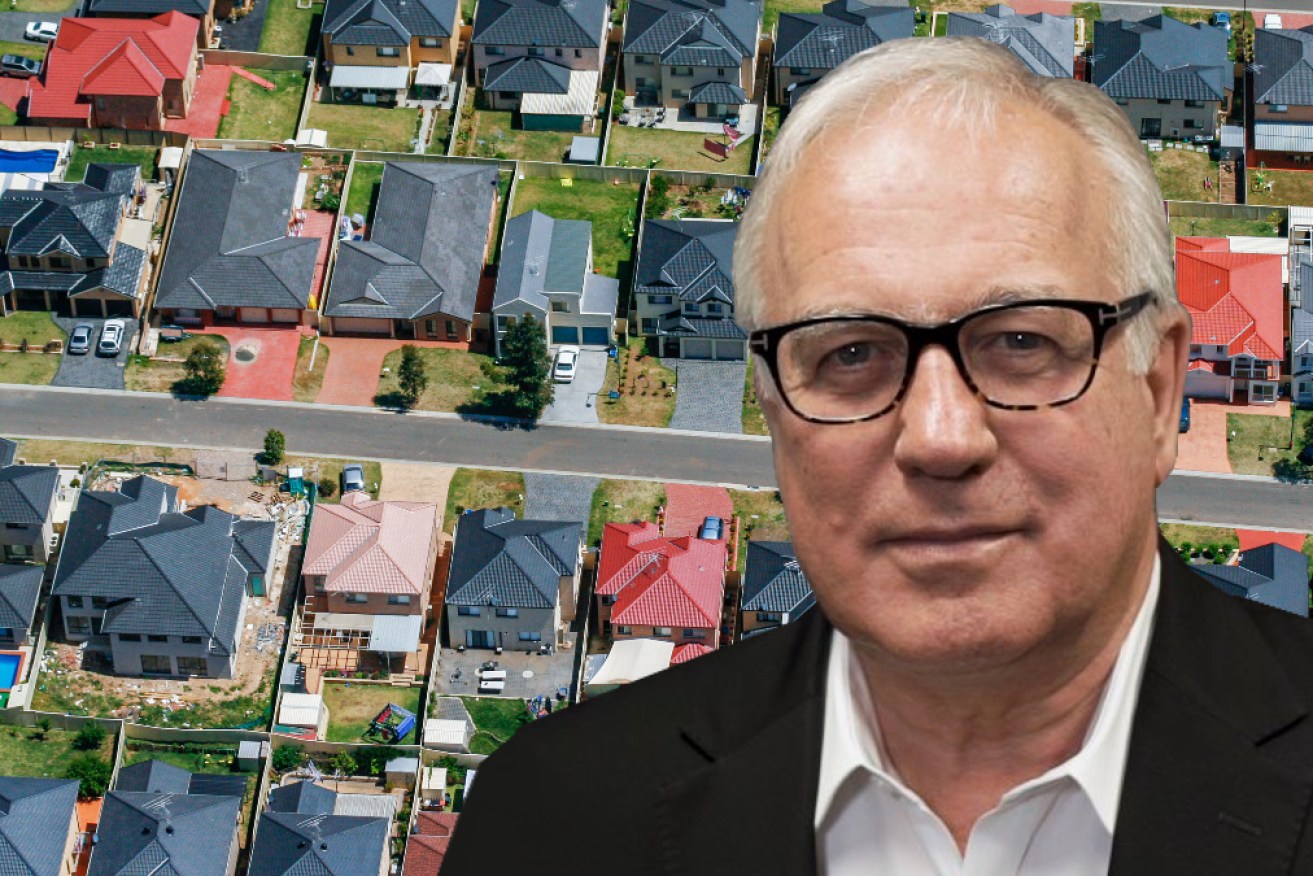Alan Kohler: Housing, not bracket creep, is driving our cost-of-living crisis


Higher house prices and interest rates are costing Australian families an extra $240 billion a year. Photo: TND/Getty
It is so dispiriting to watch Australian politics obsess over a small change in the way bracket creep is redistributed when the real cost-of-living crisis is house prices and interest rates.
In other news, our most important ally, America, is apparently about to re-elect Donald Trump. The economy of our most important trading partner, China, is sinking. And climate change will cost many billions of dollars and spell the end of two of our biggest exports, coal and gas.
And three months after the Voice referendum debacle and two days after another divisive national birthday the condition of Australia’s First People remains an open wound.
But hey, let’s have an argument, and even an election, about who gets what out of a partial hand back of the impact of inflation on tax brackets worth an average of about $75 a week per family.
Meanwhile, it looks like average mortgage repayments are up more than $500 a week. Total annual mortgage repayments have gone up $170 billion per year since late 2020, from $130 billion to $300 billion – so more than double.
Those figures are the total repayments for Australia’s six million borrowers, who had average loans of $400,000 in September 2020, paying 2.5 per cent interest, moving to the current interest rate of 6.8 per cent on the now higher average mortgage of about $600,000.
It’s $544 a week per family, on average, swamping the stage-three tax cuts.
Actually, we should probably include rental homes in the totals, since the landlords’ extra repayments have been piled onto the rent they charge tenants.
There are 2.4 million rented houses in Australia and assuming the same average mortgage sizes, that’s another $70 billion a year in repayments/rent.
With the $170 billion extra being paid by home owners with mortgages, that makes a total increased burden of $240 billion a year since the pandemic, as a result of higher house prices and interest.
Meanwhile, Treasury says the changes to the stage-three tax cuts announced last week will save the budget $1.3 billion in 2024, cost $2.5 billion over the following two years, and then save close to $30 billion during the seven years after that.
The burden on families
So let’s just be clear about what all this means.
Bracket creep has been costing taxpayers about $2.5 billion a year for a while, and the changes spruiked by the Albanese government last week to hand it back will result in overall tax revenue actually increasing by an average of $3 billion a year for the next 10 years.
Higher house prices and interest rates are costing Australian families an extra $240 billion a year or something like $24,000 a year per family – 10 times the cost of bracket creep and about six times the median tax cut that was announced last week.
Bracket creep is a small contributor to the cost-of-living crisis and the stage-three tax cuts – either Morrison’s Mk 1 or the new and improved Albanese’s Mk 2 – would not deal with it fully even if it was.
The foundation of the problem is house prices and interest rates, with a contribution from consumer inflation, which the higher interest rates are designed to fix by crushing indebted families to stop them spending.
So what’s the national policy to fix house prices?
Bribe state governments $15,000 per lot to release more land for development with an upper limit of 1.2 million houses to be built over five years, or 240,000 per year (note that’s a limit, not a target).
But that would only get the number of houses being built back to what it was in the five years before the pandemic, and would not be enough to get house prices to stop rising given current population growth.
In any case, current housing starts are running at 148,000 a year – almost 100,000 short of the inadequate target.
A crucial question is: Where can the extra houses be built?
Derailed solution
In my Quarterly Essay on housing, published recently, I was pessimistic that enough new housing could be built in existing suburbs, by making them denser and using existing infrastructure, so I thought the answer would have to be fast trains to regional areas so that commuting from further out would be viable.
Brendan Coates and Joey Moloney from the Grattan Institute took me to task for this idea, calling it an “unfortunate misfire”, and arguing that I was unduly pessimistic, that most residents of Sydney and Melbourne actually want more density if it means being able to live in a better-located suburb.
I hope they’re right, because in another response to my essay, Mark Walker explained that speeding up trains is much easier said than done.
The current convoluted, contour-following 19th-century tracks dictate the speed of trains today, and to speed them up would require big spending on upgrading the rail lines – embankments, viaducts and cuttings on which the rails are laid.
So densifying existing suburbs would be much cheaper, easier and overall much better than creating new ones further out, no doubt about it.
I just have a low opinion of the courage of today’s politicians, at all levels of government, and their ability to maintain a difficult policy for a long time.
It has taken 20 years for housing to become the cause of a cost-of-living crisis, and it will take 20 years of focused and consistent policy work for that to be unwound, including difficult tax reform and forcing medium and high-rise buildings on suburban NIMBYs, or building faster trains.
Which is why they’re arguing about bracket creep.
Alan Kohler writes twice a week for The New Daily. He is finance presenter on the ABC News and also writes for Intelligent Investor








